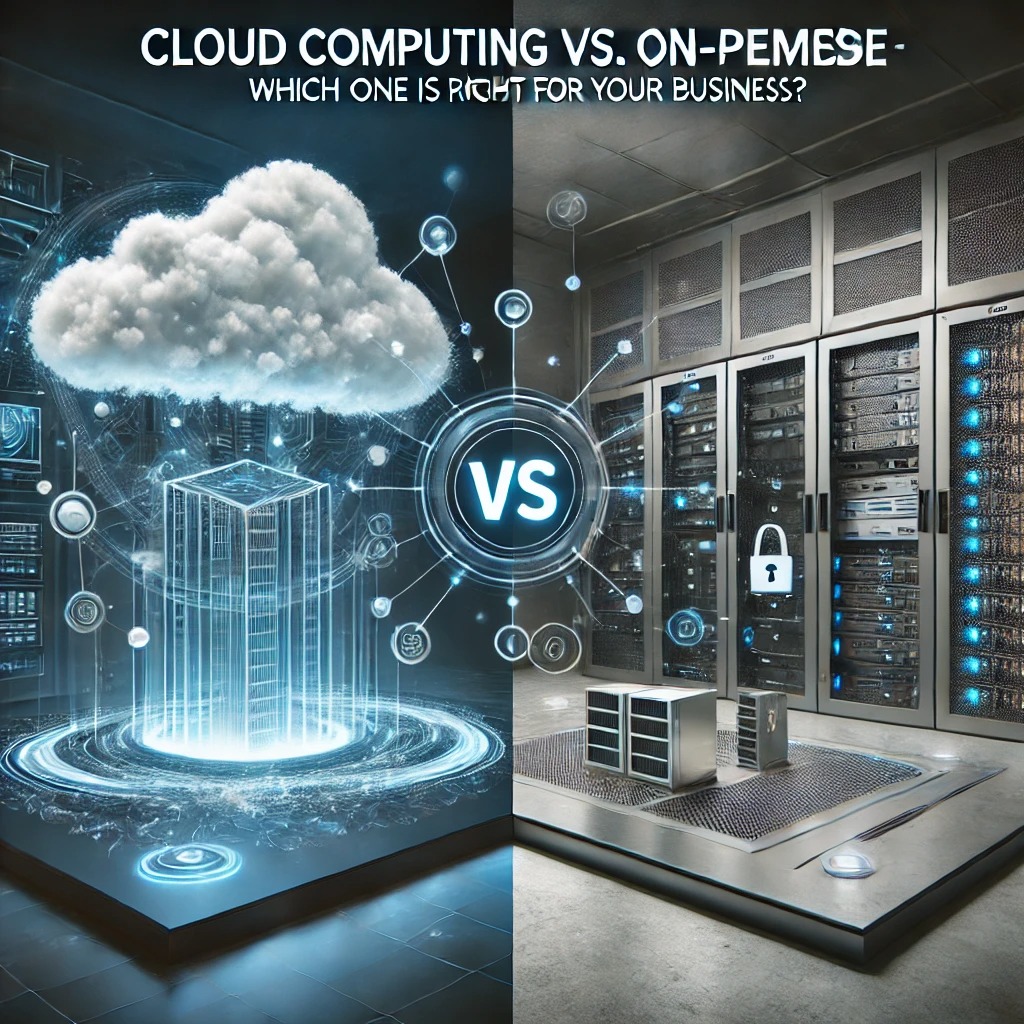As businesses continue to evolve in the digital age, choosing the right IT infrastructure is crucial for efficiency, scalability, and security. Two primary options dominate the landscape: cloud computing and on-premise solutions. While each has its advantages and challenges, selecting the best fit for your company depends on various factors, including cost, control, scalability, and security. This article explores the differences between cloud computing and on-premise infrastructure to help businesses make informed decisions.
Understanding Cloud Computing
Cloud computing involves storing and accessing data, applications, and services over the internet rather than on a local server. Major cloud providers such as Amazon Web Services (AWS), Microsoft Azure, and Google Cloud offer businesses scalable and flexible computing resources on demand.
Advantages of Cloud Computing
- Scalability – Cloud services allow businesses to scale resources up or down based on demand, making it ideal for companies with fluctuating workloads.
- Cost Efficiency – Cloud computing reduces the need for costly hardware investments and maintenance, as companies only pay for the resources they use.
- Accessibility & Remote Work – Employees can access data and applications from anywhere with an internet connection, enhancing remote work capabilities.
- Automatic Updates & Maintenance – Cloud providers handle updates, security patches, and system maintenance, reducing IT workload.
- Disaster Recovery & Backup – Cloud services offer automated backups and disaster recovery solutions to minimize downtime.
Challenges of Cloud Computing
- Dependence on Internet Connectivity – Cloud access requires a stable internet connection, which can be a limitation in areas with poor connectivity.
- Security & Compliance Concerns – While cloud providers implement security measures, businesses must ensure compliance with industry regulations and data protection laws.
- Limited Customization – Some cloud services have restrictions on software customization, limiting control over certain configurations.
Understanding On-Premise Infrastructure
On-premise infrastructure refers to IT resources—such as servers, databases, and networking equipment—hosted and managed within a company’s physical location. This traditional approach provides businesses with full control over their IT environment.
Advantages of On-Premise Infrastructure
- Greater Control & Customization – Businesses have complete control over their IT environment, allowing for tailored configurations and security settings.
- Enhanced Security & Compliance – Sensitive data remains within the company’s physical location, which can help meet strict regulatory requirements.
- Reliable Performance – On-premise solutions do not rely on internet connectivity, ensuring consistent performance and low latency.
- Long-Term Cost Savings – While upfront costs are high, on-premise infrastructure may lead to cost savings in the long run by avoiding recurring cloud service fees.
Challenges of On-Premise Infrastructure
- High Initial Investment – Setting up on-premise infrastructure requires significant capital investment in hardware, software, and IT staff.
- Maintenance & IT Management – Businesses must manage hardware upgrades, security updates, and system maintenance, increasing IT workload.
- Limited Scalability – Expanding on-premise infrastructure can be costly and time-consuming compared to cloud-based solutions.
- Disaster Recovery Risks – Without proper backup and disaster recovery solutions, on-premise setups are vulnerable to data loss in case of hardware failure or cyber threats.
Which One is Right for Your Company?
Choosing between cloud computing and on-premise solutions depends on various business needs and priorities. Here are key factors to consider:
- Budget: If your company wants to minimize upfront costs and benefit from a pay-as-you-go model, cloud computing may be the better choice.
- Security & Compliance: Businesses handling sensitive data (such as healthcare or finance) may prefer on-premise infrastructure for greater control over security.
- Scalability Needs: Companies expecting rapid growth or fluctuating workloads should consider cloud computing for its flexibility.
- IT Resources: If your organization has a dedicated IT team to manage infrastructure, an on-premise setup could be viable.
- Remote Work & Accessibility: Cloud solutions are ideal for businesses with remote teams or multiple office locations.
Hybrid Cloud: The Best of Both Worlds?
Many businesses are adopting a hybrid cloud approach, combining on-premise infrastructure with cloud computing. This model allows companies to store sensitive data on-premise while leveraging cloud resources for scalability and flexibility.
Conclusion
Both cloud computing and on-premise solutions offer unique benefits, and the right choice depends on your company’s specific needs, budget, and security requirements. Businesses should evaluate their long-term goals and IT capabilities to determine the best infrastructure for their operations. For many, a hybrid approach may offer the optimal balance of control, security, and scalability.


